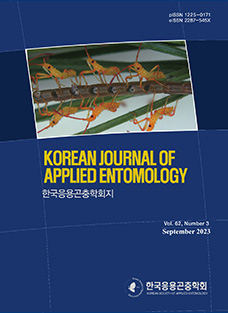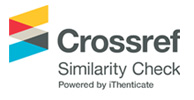![]() Journal Search Engine
Journal Search Engine
ISSN : 1225-0171(Print)
ISSN : 2287-545X(Online)
ISSN : 2287-545X(Online)
Korean Journal of Applied Entomology Vol.64 No.4 pp.295-302
DOI : https://doi.org/10.5656/KSAE.2025.11.0.056
DOI : https://doi.org/10.5656/KSAE.2025.11.0.056
Development of Binomial Sampling Plan for Bemisia tabaci in Greenhouse Tomatoes
Abstract
Tomato is one of the most widely cultivated vegetables worldwide and is primarily grown in greenhouses. While greenhouse cultivation enhances productivity, it also increases the density of pests. Whitefly (Bemisia tabaci) is a major pest that causes significant damage to tomato crops by inhibiting growth and transmitting plant viruses, leading to yield loss. Due to its high resistance, an integrated pest management (IPM) strategy is essential for effective control. This study developed a binomial distribution model to analyze the density and infection rate of B. tabaci nymphs in greenhouse tomato cultivation. The results showed that nymph density was higher in the lower plant parts, influenced by the cultivation method and oviposition behavior. Spatial distribution analysis confirmed an aggregated distribution pattern, with an optimal tally threshold () of 3. The model’s accuracy remained unaffected by sample size but varied with the value. Validation using independent data demonstrated high predictive accuracy, supporting its application in setting economic injury thresholds. The binomial sampling method proved to be a time- and cost-efficient approach for greenhouse pest management. By integrating this model with IPM strategies, it can contribute to the development of a sustainable pest control system, optimizing control measures and minimizing pesticide use while maintaining crop productivity.
초록
Vol. 40 No. 4 (2022.12)

Frequency Quarterly
Doi Prefix 10.5656/KSAE
Year of Launching 1962
Publisher Korean Society of Applied Entomology



Online Submission
submission.entomology2.or.kr
 KSAE
KSAE
The Korean Society of Applied Entomology








